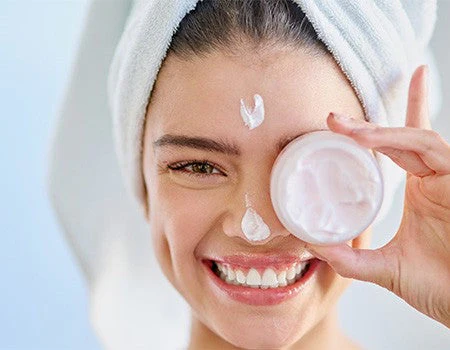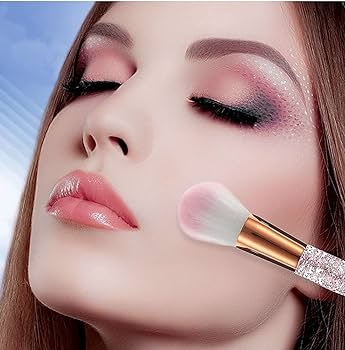Facials have become a cornerstone of skincare routines for many, offering a luxurious way to pamper oneself while reaping numerous benefits for the skin. But what exactly is a facial, and why are they so important in maintaining healthy, glowing skin?
What is a Facial?
A facial is a multi-step skin treatment that typically includes cleansing, exfoliation, extraction, massage, and the application of various masks and creams. It’s designed to address specific skin concerns and improve the overall health and appearance of your skin.
Importance of Facials in Skincare
Facials are not just about relaxation and pampering; they play a critical role in maintaining healthy skin. Regular facials can help manage various skin issues, improve skin texture, and keep your complexion looking its best.

Types of Facials
Classic Facial
The classic facial is the most basic type of facial, ideal for maintaining general skin health. It involves cleansing, exfoliation, extraction, and a hydrating mask, making it suitable for all skin types.
Hydrating Facial
Designed for dry and dehydrated skin, hydrating facials focus on replenishing moisture levels. They use products rich in hyaluronic acid, glycerin, and other hydrating agents to plump and nourish the skin.
Anti-Aging Facial
Anti-aging facials are tailored to address signs of aging like fine lines, wrinkles, and sagging skin. These facials often include ingredients like retinoids, peptides, and antioxidants to boost collagen production and improve skin elasticity.
Acne Facial
For those struggling with acne, acne facials are specifically formulated to reduce breakouts and calm inflammation. They typically involve deep cleansing, salicylic acid or benzoyl peroxide treatments, and soothing masks to reduce redness and irritation.
Brightening Facial
Brightening facials aim to improve skin tone and texture, targeting issues like dullness and hyperpigmentation. They often include vitamin C, alpha hydroxy acids (AHAs), and other brightening agents to enhance the skin’s radiance.
Aromatherapy Facial
Aromatherapy facials combine traditional facial techniques with the therapeutic benefits of essential oils. This type of facial not only improves skin health but also provides relaxation and stress relief through the use of aromatic oils.

Benefits of Regular Facials
Deep Cleansing
Facials offer a deeper cleanse than what you can achieve at home. They remove dirt, oil, and impurities that can clog pores and lead to breakouts.
Exfoliation
Exfoliation is a key step in facials, removing dead skin cells and promoting cell turnover. This helps to reveal fresher, more vibrant skin.
Improved Circulation
Facial massages during the treatment boost blood circulation, bringing more oxygen and nutrients to the skin cells, which can enhance skin health and appearance.
Stress Relief
The soothing techniques used in facials can help reduce stress and promote relaxation, which is beneficial for overall well-being.
Anti-Aging Benefits
Regular facials can help delay the signs of aging by promoting collagen production, improving skin elasticity, and reducing the appearance of fine lines and wrinkles.
Detoxification
Facials help to detoxify the skin, removing toxins and impurities that can lead to dullness and congestion.

The Facial Process
Consultation
Every facial begins with a consultation to assess your skin type and concerns. This helps the esthetician tailor the treatment to your specific needs.
Cleansing
The first step of a facial is thorough cleansing to remove makeup, dirt, and oil from the skin’s surface.
Exfoliation
Exfoliation follows cleansing, using mechanical or chemical methods to remove dead skin cells and reveal a smoother complexion.
Extraction
For those with clogged pores, extraction is performed to remove blackheads and whiteheads safely and effectively.
Massage
Facial massage is a relaxing step that also improves circulation and helps the skin absorb the products better.
Mask Application
A mask is applied to address your skin’s specific needs, whether it’s hydration, brightening, or soothing.
Moisturizing
The final step is moisturizing to lock in the benefits of the facial and protect the skin barrier.
Choosing the Right Facial for Your Skin Type
Oily Skin
If you have oily skin, opt for facials that focus on deep cleansing and oil control. Ingredients like salicylic acid and clay can help manage excess oil and prevent breakouts.
Dry Skin
For dry skin, hydrating facials are ideal. Look for treatments that include moisturizing ingredients like hyaluronic acid, glycerin, and ceramides.
Combination Skin
Combination skin can benefit from facials that balance oil production and provide hydration. Multi-masking, using different masks on different areas of the face, can be particularly effective.
Sensitive Skin
Sensitive skin requires gentle facials with soothing and anti-inflammatory ingredients like aloe vera, chamomile, and green tea.

DIY Facials at Home
Basic Ingredients
You can create effective DIY facials at home using ingredients like honey, yogurt, oatmeal, and avocados. These natural ingredients can provide hydration, exfoliation, and soothing benefits.
Step-by-Step Guide
- Cleanse: Start with a gentle cleanser to remove dirt and oil.
- Exfoliate: Use a mild exfoliant to remove dead skin cells.
- Steam: Steaming your face can open up pores for better absorption of products.
- Mask: Apply a homemade mask suited to your skin type.
- Moisturize: Finish with a hydrating moisturizer to lock in the benefits.
Common Mistakes to Avoid
- Over-Exfoliating: Too much exfoliation can irritate the skin and cause damage.
- Using Harsh Ingredients: Avoid ingredients that can be too harsh or cause allergic reactions.
- Skipping Sunscreen: Always apply sunscreen after a facial to protect your skin from UV damage.
Professional vs. DIY Facials
Advantages of Professional Facials
Professional facials offer a deeper, more thorough treatment using advanced techniques and products. Estheticians can also provide expert advice tailored to your skin type and concerns.
When to Opt for DIY
DIY facials are great for regular maintenance between professional treatments. They’re cost-effective and can be customized with natural ingredients.
Common Myths About Facials
Facials Cause Breakouts
While it’s possible to experience a breakout after a facial due to purging, this is not common and usually resolves quickly. Regular facials can actually help prevent breakouts by keeping the skin clean and clear.
All Facials are the Same
Facials are highly customizable, with different types designed to address specific skin concerns. It’s important to choose a facial that suits your skin type and needs.
You Only Need Facials for Problematic Skin
Facials are beneficial for all skin types, not just those with specific issues. They can help maintain healthy skin and prevent future problems.
Post-Facial Care Tips
Immediate Aftercare
After a facial, it’s important to avoid heavy makeup, intense sun exposure, and harsh skincare products for at least 24 hours.
Long-Term Skincare
To maintain the benefits of your facial, follow a consistent skincare routine that includes cleansing, moisturizing, and sun protection.
Facial Treatments for Men
Differences in Male and Female Skin
Men’s skin is typically thicker and oilier than women’s, with more facial hair. These differences can affect the type of facial treatments that are most effective.
Popular Facials for Men
Men can benefit from facials that address issues like ingrown hairs, excess oil, and signs of aging. Treatments like deep cleansing, exfoliation, and anti-aging facials are popular choices.
How Often Should You Get a Facial?
General Guidelines
Most experts recommend getting a facial every 4-6 weeks. This allows enough time for skin cells to regenerate and maintain the benefits of the treatment.
Factors Influencing Frequency
Your skin type, concerns, and budget can all influence how often you should get a facial. Consult with your esthetician to determine the best schedule for your needs.

What to Expect During Your First Facial
Initial Consultation
Your first facial will start with a consultation to discuss your skin concerns and goals. This helps the esthetician tailor the treatment to your needs.
The Procedure
The facial procedure typically includes cleansing, exfoliation, extraction, massage, mask application, and moisturizing. Each step is designed to improve your skin’s health and appearance.
Post-Treatment Expectations
After your facial, your skin may be slightly red or sensitive, but this should subside quickly. You’ll likely notice an immediate improvement in your skin’s texture and radiance.
Understanding the Costs of Facials
Price Range
The cost of facials can vary widely, from $50 to over $200, depending on the type of facial and the spa or clinic.
Factors Affecting Cost
Factors like the esthetician’s experience, the products used, and the complexity of the treatment can all affect the price of a facial.
Choosing a Professional Esthetician
Credentials to Look For
When choosing an esthetician, look for credentials like a license from a reputable cosmetology school and certifications in specific facial treatments.
Questions to Ask
Ask about the esthetician’s experience, the products they use, and their approach to different skin types and concerns.
Conclusion
Facials are a vital part of a comprehensive skincare routine, offering numerous benefits from deep cleansing to anti-aging. Whether you choose to go the professional route or try DIY treatments at home, incorporating regular facials can help you achieve and maintain healthy, glowing skin.
FAQs
Can facials damage your skin?
When performed correctly, facials are safe and beneficial. However, improper techniques or harsh products can potentially cause damage.
How soon will you see results after a facial?
Many people notice immediate improvements in their skin’s texture and appearance after a facial, with continued benefits over the following days.
Are facials suitable for all ages?
Yes, facials can be beneficial for people of all ages, with treatments tailored to different skin concerns at various life stages.
What should you do if you have a reaction to a facial?
If you experience a reaction, contact your esthetician immediately for advice. They can recommend soothing treatments and products to calm your skin.
Can you wear makeup after a facial?
It’s best to avoid makeup for at least 24 hours after a facial to allow your skin to breathe and absorb the benefits of the treatment fully.



